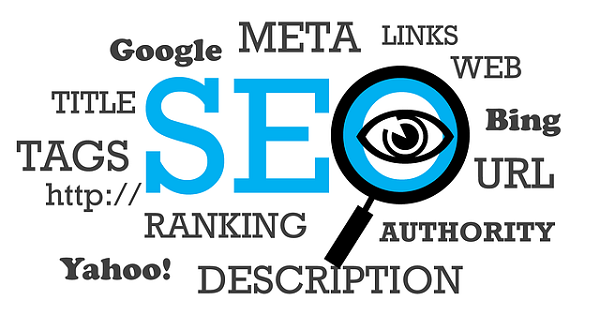Your brand can produce the greatest blog post, infographic or white paper ever, but if it isn’t picked up by search engines and found by your target audience, then what’s the point?
There are several factors that go into a content plan, such as an editorial calendar and promotion. But ensuring your brand’s content is search friendly should also be one of them. SEO is essentially about indexation and crawlability links, according to Search Engine Watch.
Google gathers web pages using the crawling process and then puts the pages into an index, according to Google. That means brands needs to make sure their site can easily be indexed and crawled.
How does Google search work?
by Google Webmasters via YouTube
Why does searchability matter to brands? Simply put, if no one can find your company, how are you going to grow your business? Nearly a quarter of all traffic to B2B sites (21 percent) comes from search engines. Of that, an estimated 90 percent comes from organic search, according to eConsultancy.

What are the top 3-5 SEO areas where webmasters make the most mistakes?
by Google Webmasters via YouTube
If your company doesn’t appear as the top result or within the first page of search results, there goes your visibility and ownership of your brand’s presence in search.
Rock Content’s Marketing Developer Jessica Joyce offered insights on how companies can maximize their SEO efforts.
What do brands have to consider when optimizing their digital platforms?
Jessica Joyce: Consistency, I would say, is the biggest factor I see. Ensure that you have a complete profile and have the same voice/information and message across all your platforms and your posting is consistent. Train your brand ambassadors and social and developers updating your front line information and ensure they’re saying the same message and conveying that all the way through and that it’s happening on a timeline that everyone is comfortable with. No one is asking you to post every day, but as long as it’s something that everyone can get behind and commit to, that helps.
SEO seems like a daunting task for businesses that might not be experts in this — is there a formula they can use or do they have to be flexible?
Jessica Joyce: Don’t get bogged down in tech and the formula. It all changes so often, so leave that part to developers and experts. The tech pieces are becoming easier and easier to implement and more consistent throughout the web with UI and UX practices also becoming more consistent — so the technical elements that were once just for SEO are being baked into dev + UI + UX + content as they should be.
Are there simple things they can do on their website and social platforms to boost their search exposure?
Jessica Joyce: The biggest one I see even today is ensure your title tags are meaningful and that the architecture of your site works for users. Users come before a search engine, every time. Also make sure that any images you add have indexable text for them, and name your images something other than DS89000.jpg — give it human-readable file names.
Google and other platforms change up their algorithms. Does that mean brands have to update their SEO regularly?
Jessica Joyce: I take a look and reassess sites. I work weekly as Google makes updates to their algorithm daily, but it’s not necessary in most cases to check it that often. I would say ensure a check-up (outside of the consistent updates you’re making) when they roll out large changes, which usually happens twice a year. Then that’s a good time to take a look at your analytics for changes in search traffic or elements that can be adjusted and enhanced. The web changes quite often anyway outside of SEO, so twice a year is minimum for adjusting to everything.
How do businesses measure whether their SEO tactics are working or how should they gauge success?
Jessica Joyce: This is a huge piece of SEO. I use Moz + Hubspot and their tools as my major tracking for gauging success, and then outside of that I have a list of tools and also use the data in Google Analytics to ensure what we’re doing is resulting in a successful campaign. If you’re just getting started and don’t have the budget for paid tools, Hubspot’s Website Grader is a great high-level overview of your site and can give you a lot of actionable metrics to start out with.
Here are a few tips on how brands can improve SEO:
Don’t ignore keywords. Pay attention to headlines, page titles and meta-descriptions, this is the text inside the tags that summarizes the page’s content, which is sometimes used as the snippets, which is the text under each search result, according to Google. Google recommends using meta-descriptions for each page, tagging key identifiers such as an author or page number and using quality descriptions.
Use tools to gauge and improve SEO. There are plenty of free resources to familiarize yourself about SEO online. ClickMinded has a great checklist that outlines key tools to measure SEO efforts. Install Google Analytics and Google Webmaster Tools applied to your site. If you’re using WordPress, install the SEO plugin. Read the Webmaster guides for Yahoo, Bing and Google.
Google Webmaster Tools
by Google Webmasters via Youtube
Review your site links. Search Engine Watch recommends focusing on site links, which are the links that appear under your main organic listings, according to the website. They’re auto-generated, so assess whether those links are the strongest entry points to your brand. For site links, Google recommends using anchor text and alt text that’s informative, concise and avoids repetition. If the site links that appear under search aren’t the gateway points you want, demote those URLs under the Webmaster Tools homepage so they won’t be considered, according to Google.
Don’t discount Google+. Google+ has typically been associated with an SEO boost. Even some news organizations use it to improve SEO during breaking news. If Google has synced your brand and verified Google+ page, and a Knowledge Graph appears for the first page of brand results, then your recent Google+ posts also appear there, Search Engine Watch reported.
SEO is much like the weather — it’s always present and not going away, it’s constantly changing, it’s something you need to monitor and then adjust to accordingly. Using that same analogy, it does not mean you need to become a meteorologist, but applying tools to keep a pulse on your SEO will certainly help.
Click here to see how Rock Content’s content engagement platform can help your company achieve its business goals.










